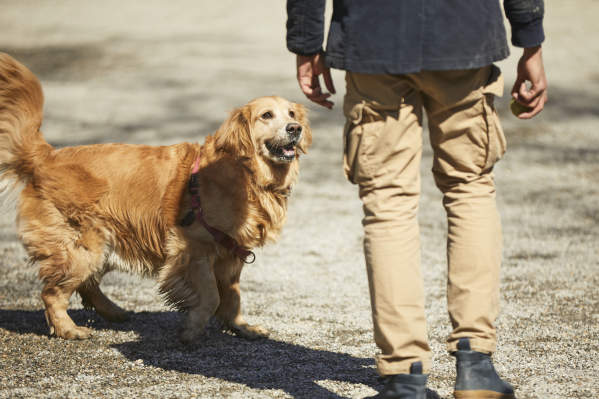From basic obedience to dealing with destruction and aggression, the average dog trainer can help you and your dog in a number of ways. But there’s plenty you can do on your end to help maximize your dog’s training sessions, too.
We spoke with Emily Tronetti, MS, CPDT-KA, a certified professional dog trainer and owner of Heal to Howl based in Bellevue, Washington. Here’s what she thinks every dog owner should know.
1. Don't Be Afraid To Ask For Help
If your dog needs obedience or behavioral training, it’s ok — reach out for help. "Don’t feel guilty or blame yourself. There’s so much misinformation out there; it’s completely understandable if you’ve made some mistakes along the way," Tronetti says.
Don't let fear of judgement stop you from getting professional assistance, either. "If you’re getting you and your dog quality help, that should be celebrated above all else," she adds.
2. Use Positive Reinforcement
Trade in a shock collar for consistent commands and positive reinforcement if you really want to see results. "Training methods and tools that rely on discomfort, fear, or pain to change behavior can actually cause fear and aggression in the long run," says Tronetti.
Instead, use rewards like food and play to train your dog. "Research supports that reward-based methods can effectively change your dog’s behavior and improve their welfare and well-being," she adds.
3. Make Feeding Fun
Time to ditch the dog food bowl. "Feeding your dog with food puzzle toys or training games instead is an easy way to provide mental stimulation for your dog — it could even decrease some behavior problems," Tronetti explains.
The same rules apply for treats — provide treat toys and puzzles to reward good behavior and exercise Fido’s mind at the same time.
4. Note Your Dog’s Body Language
A dog’s body language is extremely subtle, but they’re almost always telling you something by the way they are moving (or not moving). The position of their ears and tail, and even their bark all have meaning.
"Taking the time to learn about dog body language and communication can make a huge difference in your dog’s behavior and welfare, and the relationship you share with them," Tronetti says.
While you'll never be able to translate your dog word-for-word, knowing their individual body language can help you "listen" to what they're trying to say. "It can also help you identify subtle signs that your dog is feeling stressed," Tronetti adds. "Once you can identify these signs, you’ll learn when you should intervene in certain situations to prevent behavioral problems like biting."
5. Do Your Homework
Your dog needs constant reinforcement to grasp the complex concepts we try to teach them. Allowed on the bed but not the sofa? Getting scraps from the kitchen but never from the dinner table? Your dog won't learn if they’re only exposed to these types of rules and commands for one or two training sessions a week.
"A good trainer will provide you with a manageable amount of homework between sessions," says Tronetti. This isn't to take away the fun or make class hard. "Doing your homework between sessions can help your dog make progress faster and help you get the most out of the time and money you’ve invested in hiring a trainer," she adds.
Trust Your Trainer

Certified animal trainers have experience dealing with mischievous pups and their owners. Providing your pup with proper obedience training as early as possible can help point them down a path to good behavior for life — but know that it’s never too late to ask for help. As long as you put in the work, before you know it, you’ll become a great handler for your dog.
